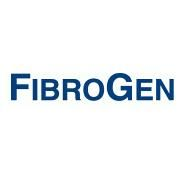
FibroGen, a science-based biopharmaceutical company, announced positive topline results from the company’s phase 2 randomized, double-blind, placebo-controlled study and two combination safety sub-studies of pamrevlumab in patients with idiopathic pulmonary fibrosis (IPF). Pamrevlumab is a proprietary, first-in-class, anti-connective tissue growth factor (CTGF) antibody being evaluated in fibrotic disease and cancer.
“I am pleased to see positive phase 2 results with pamrevlumab -- an antibody against CTGF, a new target in fibrosis -- which has a good safety profile and the potential to provide alternative, much-needed new treatment options for IPF patients,” said Luca Richeldi, M.D., Ph.D., Head of the Division of Pulmonary Medicine at Agostino Gemelli University Hospital of the Catholic University of the Sacred Heart in Rome, Italy.
In the double-blind, placebo-controlled portion of this study, one hundred-three (103) patients were randomized (1:1) to receive either pamrevlumab or placebo for 48 weeks. Pamrevlumab met the primary efficacy endpoint of change of forced vital capacity percent predicted (FVC % predicted), a measure of change in lung volume, from baseline to week 48 of the study: Statistical significance was demonstrated using a linear slope analysis in the intent to treat population, Average decline in FVC % predicted from baseline to week 48 was 2.85 in the pamrevlumab arm as compared to an average decline of 7.17 in the placebo arm, an absolute difference of 4.33. Pamrevlumab-treated patients had an average decrease in FVC of 129 ml at week 48 compared to an average decrease of 308 ml in patients receiving placebo, Consistent with previous clinical studies, pamrevlumab was well tolerated in IPF patients.
In the double-blind, active-controlled combination sub-studies, fifty-seven (57) patients were randomized to assess the safety of combining pamrevlumab with approved IPF therapies. Thirty-six (36) patients on a stable dose of pirfenidone were randomized 2:1 to also receive pamrevlumab or placebo for 24 weeks. Twenty-one (21) patients on a stable dose of nintedanib were randomized 2:1 to also receive pamrevlumab or placebo for 24 weeks. Pamrevlumab was well tolerated when administered in combination with either pirfenidone or nintedanib.
“The positive results from this randomized placebo-controlled Phase 2 study build on our previous clinical data which demonstrated the potential of pamrevlumab to slow the progression of IPF with a good safety and tolerability profile,” said Peony Yu, M.D., FibroGen’s Chief Medical Officer. “We are conducting further analyses and look forward to presenting additional data from this study in the months ahead. We believe these results support a Phase 3 program in patients suffering from this debilitating and deadly disease.”
FibroGen plans to present these and additional results at the upcoming 2017 European Respiratory Society International Congress in September. The company anticipates meeting with the U.S. Food and Drug Administration to address the clinical and regulatory path forward for pamrevlumab in this indication.
IPF is a form of progressive pulmonary fibrosis, or abnormal scarring of the lungs. As the scarring progresses, transfer of oxygen into the bloodstream is increasingly impaired, leading to irreversible loss of lung function as well as high morbidity and mortality rates. Average life expectancy is estimated to be three to five years from diagnosis with approximately two-thirds of patients dying within five years of diagnosis. Survival rates are comparable to those of some of the deadliest cancers.
IPF is designated as an orphan disease in the US, with prevalence and incidence of IPF estimated to be 135,000 cases (for IPF defined by ICD-9 code) and 21,000 new cases per year, respectively, based on Raghu et al. (Am J Respir Crit Care Med (2006)) and on data from the United Nations Population Division. We believe the number of patients will continue to grow due to heightened awareness and improved methods for detection and diagnosis.
Fibrogen reports positive, pamrevlumab, patients with ipf